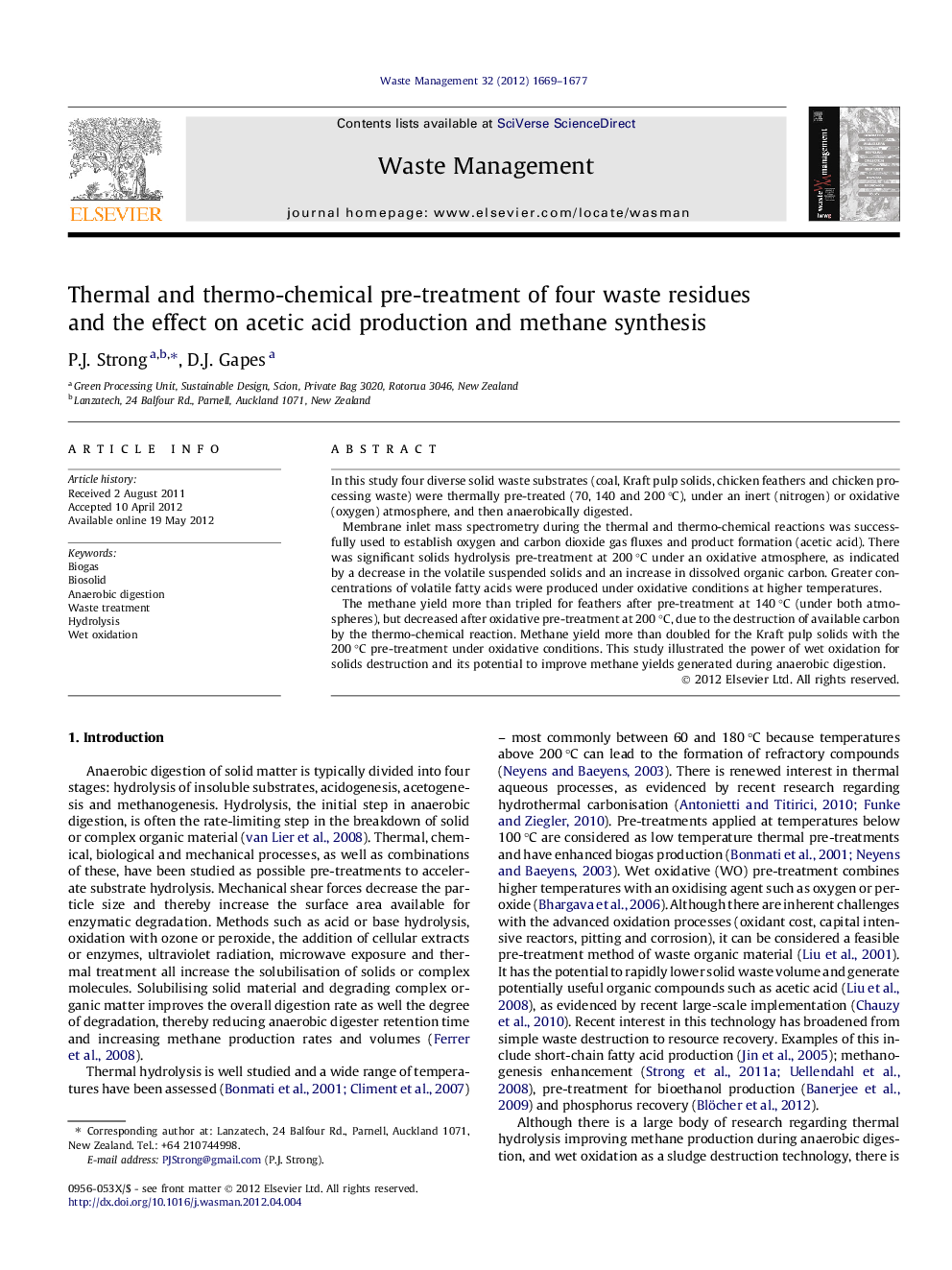| Article ID | Journal | Published Year | Pages | File Type |
|---|---|---|---|---|
| 4472317 | Waste Management | 2012 | 9 Pages |
In this study four diverse solid waste substrates (coal, Kraft pulp solids, chicken feathers and chicken processing waste) were thermally pre-treated (70, 140 and 200 °C), under an inert (nitrogen) or oxidative (oxygen) atmosphere, and then anaerobically digested.Membrane inlet mass spectrometry during the thermal and thermo-chemical reactions was successfully used to establish oxygen and carbon dioxide gas fluxes and product formation (acetic acid). There was significant solids hydrolysis pre-treatment at 200 °C under an oxidative atmosphere, as indicated by a decrease in the volatile suspended solids and an increase in dissolved organic carbon. Greater concentrations of volatile fatty acids were produced under oxidative conditions at higher temperatures.The methane yield more than tripled for feathers after pre-treatment at 140 °C (under both atmospheres), but decreased after oxidative pre-treatment at 200 °C, due to the destruction of available carbon by the thermo-chemical reaction. Methane yield more than doubled for the Kraft pulp solids with the 200 °C pre-treatment under oxidative conditions. This study illustrated the power of wet oxidation for solids destruction and its potential to improve methane yields generated during anaerobic digestion.
► Comparison of inert and oxidative hydrothermal pre-treatment of waste substrates. ► Greater volatile fatty acids production under oxidative conditions at higher temperatures. ► Methane yield from chicken feathers tripled, while Kraft pulp solids yield doubled. ► Methane production rate increased for Kraft pulp solids and decreased for feathers at higher pre-treatment temperatures. ► Membrane inlet mass spectrometry established O2 and CO2 fluxes and acetic acid formation.
